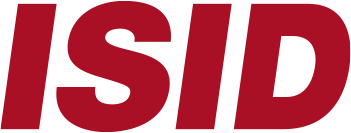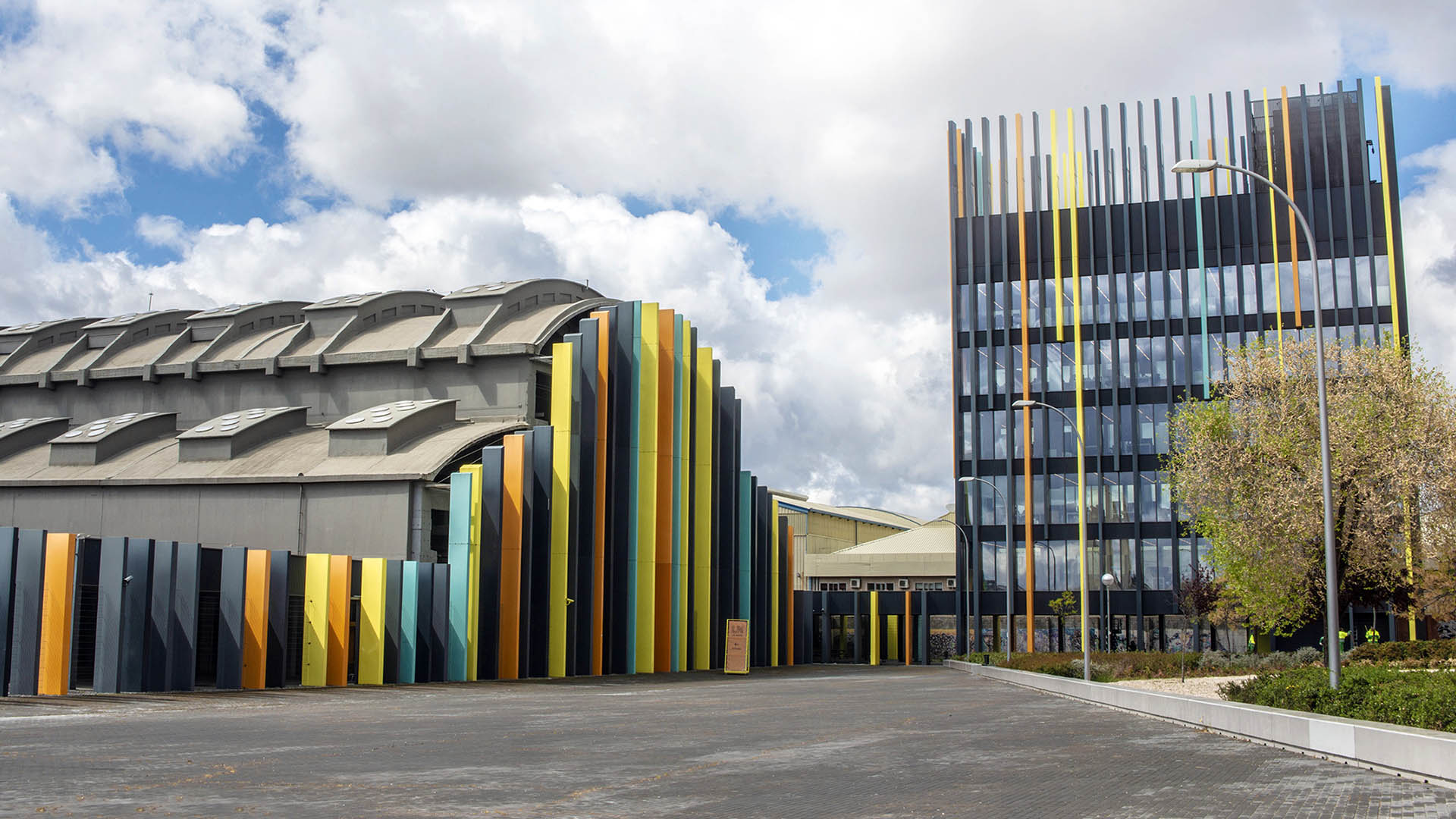ISID attends ISE 2024 at Fira de Barcelona
Once again, ISID will attend as an exhibitor at ISE 2024 (Integrated Systems Europe), the fair for audiovisual systems, which will once again be held at the Fira de Barcelona, bringing together professionals, innovators and integrators from the audiovisual sector from around the world.
Madrid, December 18th 2023. ISID, a technology company focused on AI solutions and platforms for advanced video and audio storage and analysis will attend its annual meeting with ISE 2024, from January 30 to February 2, at Fira de Barcelona. It will present its latest developments from Videoma, its enterprise video content management (EVCM) platform.
AI and the multimedia sector
The last 12 months have seen a dramatic transformation of the artificial intelligence landscape with the emergence of generative AI. But in the multimedia sector, artificial intelligence has long been helping in the organization and analysis of audio, video and photo material. In music, AI helps to improve sound quality or recover damaged files, and in images, artificial intelligence has infinite applications: from restoring or colorizing old photos automatically, to improving colors, eliminating unwanted objects or scaling images to sizes much larger than the original, almost without losses.
At ISE 2024 there will be various conferences that revolve around the theme “Smart”, touching on many areas and in which variations of AI help in daily or creative tasks in the audio and video sector. For this reason ISID will show its flagship, Videoma Archivo, and the platform’s applications to the sector.

AI in Videoma Archive

Videoma Archive is an EVCM that allows you to manage all the multimedia content of a company or organization efficiently and quickly, to allow its reuse and reuse. Videoma Archivo uses AI modules that analyze videos in search of faces, particular voices or objects, to organize large collections of material in a practically unattended way.
The system allows the rapid location of any material thanks to the creation of an advanced index using AI and the advanced search system. In addition, it transcribes audio, allowing you to find words or phrases in a matter of seconds in huge multimedia collections. The clipping function allows you to create advanced extracts and summaries from multiple input files. The fact that the platform is completely agnostic with respect to analyzer types or manufacturers allows it to be integrated into any existing environment, without having to modify it.
If you want to visit ISE 2024, get your free ticket with our code 0VZSGJRM at the ISE 2024 registration page.
About ISID
ISID is a spanish and global company that develops solutions and platforms for the processing, analysis, management and storage of audio and video, whether file-based, streaming or live (TV). Our solutions integrate advanced AI analysis modules (like biometrics, S2T, translation, object recognition, audio fingerprinting & ID, etc.) and are used in multiple sectors, such as Security, Government and Public Administration, Law Enforcement, Intelligence, Communication Agencies, Education, Media Banks, Healthcare and Legal. They are platform agnostic and can be integrated with most technology vendors and existing A/V installations.
Integrating AI Diagnostics in a HIS
2023 will undoubtedly go down as “the year of AI”. It all started with ChatGPT, but every major company is now working on some AI application in their field. In healthcare, however, this process has been going on for some years now. And it is at the stage where it can be used to diagnose medical imaging or video, looking for anomalies.
AI can help in medical imaging diagnostics
Analyzing medical images, like X-Rays, MRI or CT Scans, as well as ultrasound images or videos is hard. That is why it takes a lot of training to become a proficient radiologist, with the ability to spot changes in normal human tissues and make correct diagnosis. But, as with many other fields, artificial intelligence has also arrived in the medical sector. It is able to do a lot of things, as we are seeing in this trilogy of articles, but one of the most interesting is the possibility of doing diagnostics in medical imaging.
A properly trained AI model, that has been shown hundreds or thousands of digital medical images and videos, like those from modern X-Ray machines, or MRI, CT Scan or PET scans, can be able to spot anomalies in the tissues. Sometimes even those small anomalies that a human would not notice or see.

Early warning with AI

But why should this be important? Isn’t an experienced human radiologist better than any AI. Yes, he or she is. But, and there is a ‘but’ here, if the changes are small, the human eye, however experienced, may not notice them or dismiss them. This means that the artificial intelligence image analysis, which has received many thousands of images, could to a diagnostic or prognosis quicker and earlier than the human counterpart. And this, in turn, can help save lives. The beginning of a tumor or other anomaly, spotted by an AI algorithm before a human radiologist, can instigate further investigation by the medical professional, like additional tests or bloodwork. And this could help finding the beginning of an illness than then can be treated earlier, with a higher success rate.
What else can a medical AI help with?
Actually, almost with everything. The fact that an AI algorithm has to be trained first to be effective, is the key point here. Just like a doctor has be trained in different areas, the same can be done to an AI. In fact, an AI can be trained far more specifically than any human could, because all the AI models rely on two things: the model itself, and the data it has been trained on/is still being trained with each new patient. This allows for a kind of specialization that is difficult to achieve as a person. We can’t deal with immense amounts of data as easily as a machine can. But artificial intelligence has much more application than only image diagnosis. Here are some of them:


- Image Analysis and Interpretation. That’s the one we’ve been talking about and is only here to complete the list. AI algorithms can identify and outline abnormalities, tumors, or specific structures in medical images, helping radiologists in their analysis giving a “second opinion”.
- Quantitative Analysis. AI can provide precise measurements and quantitative data from medical images, aiding in the assessment of disease progression and treatment effectiveness. This can be very useful in medical research, for example.
- Early Warning Systems. We’ve also talked about these. The precision of an artificial vision system can surpass human abilities and detect anomalies much smaller than a person, thus raising an alarm, and starting treatment earlier.
- Tailored treatments. Artificial intelligence is able to devise personal treatment plans based on all the patient’s information, and the success rates of different drugs on similar patients, taking into account individual variations in anatomy and pathology.
- Automation. Routine or repetitive tasks, such as image preprocessing and quality control, can be automated, saving time for healthcare professionals, who can do higher value work.
- Workflow optimization. AI can enhance the speed of image analysis and interpretation, leading to faster diagnosis and treatment decisions. Besides, the algorithms can improve the quality of medical images, making it easier for healthcare professionals to interpret and diagnose.
- Reducing workload. By automating routine tasks (as seen in point 5), AI can reduce the workload on healthcare professionals, allowing them to focus on more complex cases and spend more time with patients.
- Decision Support Systems. Very close to the “second opinion” topic, AI can serve as a tool for radiologists and surgeons, providing additional insights and offering recommendations based on its analysis of hundreds of similar medical images.
- Training and Education. Although we are going to see a take on this in part III of this series, AI can be used in educational settings to simulate and generate medical imaging scenarios for training purposes, allowing healthcare professionals to enhance their skills.
Conclusion
In summary, AI in medical imaging, like our own Videomed contributes to more accurate diagnoses, improved patient treatments, and increased efficiency in healthcare workflows. One very important point is that AI is not going to substitute medical professionals, but complement them. We are still at the beginning and new fields and uses are going to be discovered in the upcoming years.
In our last article in this series of three, we are going to have a look on surgical recordings and how they can be used not only for training doctors and nurses, but also for other purposes thanks to the intervention of AI. To see first part here.
Medical video in a PACS and a HIS
Digital Medical Imaging is an important part of the modern diagnostic process. Be it X-Rays, CT Scans, MRIs or ultrasound machines, all of them produce DICOM images today, so the doctors can see them on screen at any point. But the reality isn’t so rosy at all…
Format incompatibility
In today’s healthcare, medical imaging has an ever more important role when diagnosing a patient’s condition. The systems have gotten so advanced and have such good resolution, that diagnostics are made with more certainty than ever. But, in contrast to the imaging “of old” (where “old” is just a couple of years back), today most of the medical imaging devices generate digital files, instead of having to develop film or the like.
On top of that, most of them do not generate only static images, but also video files. For these images there is the DICOM format (Digital Imaging and Communications in Medicine) which is a standard protocol for the management and transmission of medical images and related data. In fact, DICOM also supports several video formats as well as multiframe images, like the ones in CT scans. However, this is where the problems arise. Most vendors have a particular interpretation of their image formats, in order to lock the hospital to that particular brand, avoiding too much compatibility with the rest of the competing vendors.
The resulting scenario is one in which the medical professional cannot always use a PACS (Picture Archiving and Communications System) to access the images from his or her office, but has to go physically to the machine in question that did the images, and watch them there. The fact that DICOM uses no compression in the images to avoid artifacts (that could be misleading the doctor or radiologist) is one of the reasons. When recording video this also intensifies, as these files are so huge, that they usually cannot be transmitted over the hospital network in an efficient way. Hence the doctor has to go to the machine and watch the exploration video in situ. And this is far from ideal.
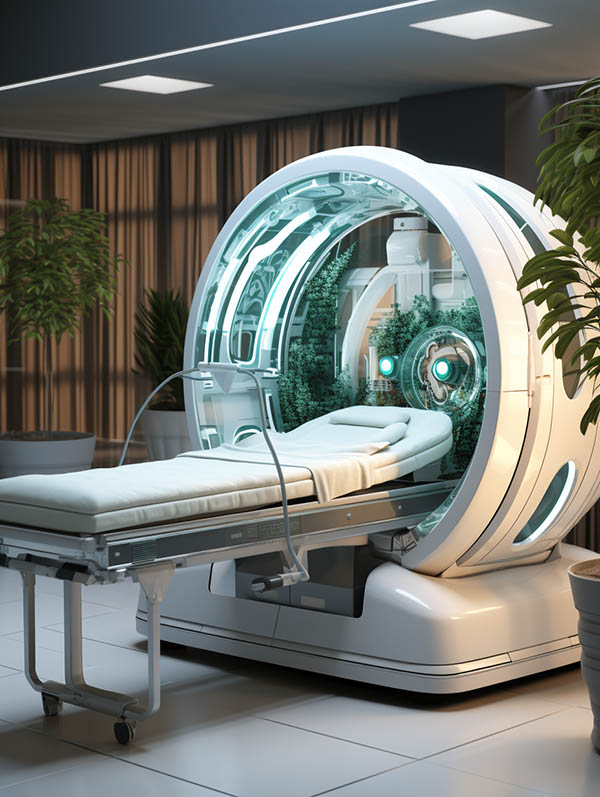
Information scattering

This situation leads to losing an enormous amount of time when doing one simple diagnostic, especially if the hospital is big. If you multiply this by all the patients that have imaging done, and the doctors that have to run around the hospital to gather all the information they need in order to make an accurate diagnostic, is it easy to see that this information scattering is not only costing time, but also money. And that the medical care quality suffers greatly under it.
The solution for DICOM images is usually the aforementioned PACS, which can be accessed from any computer in the hospital (or outside of it, depending on the security rules enforced). But most PACS do not support video directly, for a variety of reasons, chief among which is the file size and different formats. Hence the information scattering continues, because some data is in the HIS (patient data), some in the PACS (static images) and some on individual machines (medical video).
Images and video in the PACS
But there is a solution to this: adding a secondary video PACS can solve the problem of viewing medical video directly from the doctor’s office, without having to change the hardware or software in the hospital. It just needs to add the secondary video PACS, which integrates with the current PACS and, as we will see in a bit, also with the HIS. Videomed PACS is such a secondary video PACS.
What the secondary PACS does is gathering all the video from the machines by direct connection to the network and storing it centrally. Then all the formats are unified to a single one, usually a high quality MP4. This proxy file then can be viewed with ease and needing a low network bandwidth, from anywhere in the hospital, just be connecting to the PACS. If the doctor or surgeon needs to see the original file, this is also possible over a high speed network connection but, instead of involving the PACS, which may be used by all of the hospital constantly, the video is provided by the secondary PACS instead, taking load from the main PACS.
On top of this, the system anonymizes all the patient data for privacy and compliance reasons, so it never leaves the HIS or main PACS. And it is possible to specify retention periods for the videos (due to the space they take up in the system), so they are converted into lower resolution copies after a time. This makes for efficient storage, and keeps the system tidy, without losing any information.
And on top of this, platforms like Videomed PACS make use of artificial intelligence analyzers in order to catalogue the videos automatically, helping to speed the process up further, putting everything into place without human intervention. And, as we will see in part II of this series, it can integrate diagnostic AI analyzers as well, providing even more help for radiologists or surgeons, who can rely on a “second opinion” of the AI system.
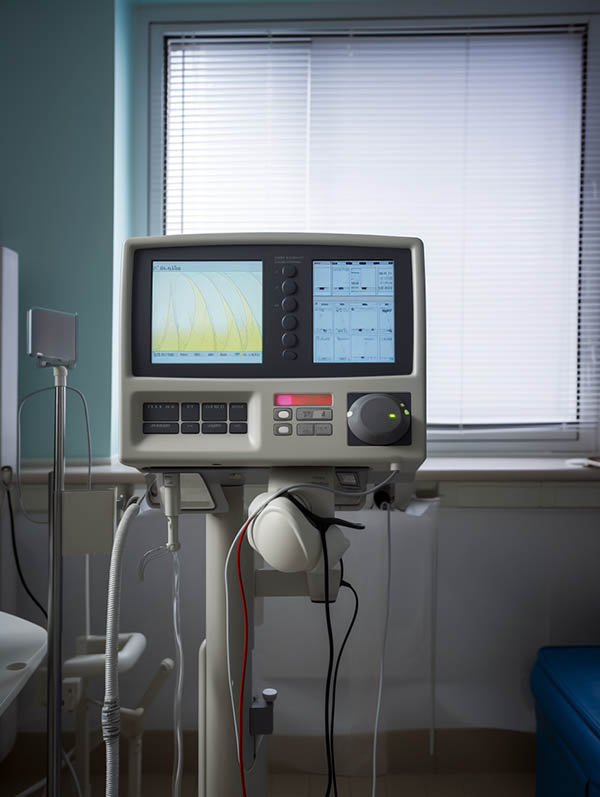
One central command point: the HIS

The use of a secondary PACS has another advantage: it can be integrated directly with the HIS, so all of the information can be retrieved together with all of the other patient record. In fact, with this system, you can integrate clips of important diagnostic videos directly in the HIS. The integrated viewer gets the data from the secondary PACS in a transparent manner, but it is all viewed inside the HIS, which is the central point for the doctors, so all of the information is on one screen, helping make better and quicker diagnostics. This way, the medical professional doesn’t have to walk through the hospital to gather everything he needs for a single patient, and can work much more efficiently.
Conclusion
To avoid scattering of medical video through a hospital or clinic, a secondary video PACS is the best solution, as it provides integration into the regular PACS, as well as the Hospital Information System, so the doctors can get all the diagnostic information they need in one place, all at once, and can work more efficiently, with all the data at hand.
In our next article in this series of three, we are going to talk about how AI Diagnostics are helping doctors and surgeons make better and quicker diagnostics. We’ll conclude the series with a look on surgical recordings and how they can be used not only for training doctors and nurses, but also for other purposes.
ISID attends IntegraTEC in Colombia
IntegraTEC, the trade show for integrators in Latin America, was held this year in Bogotá, Colombia, and brought together hundreds of manufacturers and professionals of multiple technological systems. ISID attended to learn about the latest developments from the world of audio and video.
IntegraTEC 2023
Madrid, November 6th 2023. ISID, a technology company focused on AI solutions and platforms for advanced video and audio storage and analysis has attended this year’s IntegraTEC in Colombia, which was held on October 26 and 27. IntegraTEC is the Latin American conference and Trade Show for the integration of technological systems. It brings together professionals and technologies for the integration of multiple converging sectors with a special focus on Latin America. At ISID we wanted to take advantage of the opportunity to attend to exchange knowledge with other professionals in the audio and video sector, as well as artificial intelligence applied to these areas.
The Latin American market is of great relevance for ISID and therefore the opportunities to network, meet local manufacturers and integrators first-hand, and share knowledge with other professionals and experts are very valuable for us. We already have some projects in Latin America, for example in Colombia, Ecuador and Peru and our goal is to better understand the South American market, to adapt our technology to local markets and thus offer maximum value.
On the other hand, IntegraTEC was the perfect setting to show our latest innovations in AV analysis and archiving technology, as well as our products, such as Videoma Archive. Our audio and video processing, analysis, management and storage platform integrates advanced AI modules and is currently used in multiple sectors, such as Security, Government and Public Administration, Communication Agencies, Education, Media Banks, Health and Legal.
We will also attend the next edition of IntegraTEC, which will be held on August 14 and 15, 2024 in Mexico.

About ISID

ISID is a spanish and global company that develops solutions and platforms for the processing, analysis, management and storage of audio and video, whether file-based, streaming or live (TV). Our solutions integrate advanced AI analysis modules (like biometrics, S2T, translation, object recognition, audio fingerprinting & ID, etc.) and are used in multiple sectors, such as Security, Government and Public Administration, Law Enforcement, Intelligence, Communication Agencies, Education, Media Banks, Healthcare and Legal. They are platform agnostic and can be integrated with most technology vendors and existing A/V installations.
ISID participates at CNIS's round table: AI's uses at the Public Administration
A series of round tables were held on October 10 at #CNIS2023, the thirteenth National Congress of Innovation and Public Services (CNIS). ISID participated in one of them, called “A tour of artificial intelligence: 5 practical experiences”, together with other speakers from the AI and IT sector.
#CNIS 2023
Every year the Congreso Nacional de Innovación y Servicios Públicos is held in Madrid and on this occasion, as on previous years, the event took place in La Nave. For two days, technology and public administrations come together to catch up on the latest developments and learn about the needs of the State administrations.
The event has dozens of roundtables and talks on digitalization. This year there was a round table dedicated to the impact that artificial intelligence is having and may have in the future in Administrations.
5 speakers have presented their experiences in various projects related to AI and the public sector. In order, the interventions were the following:
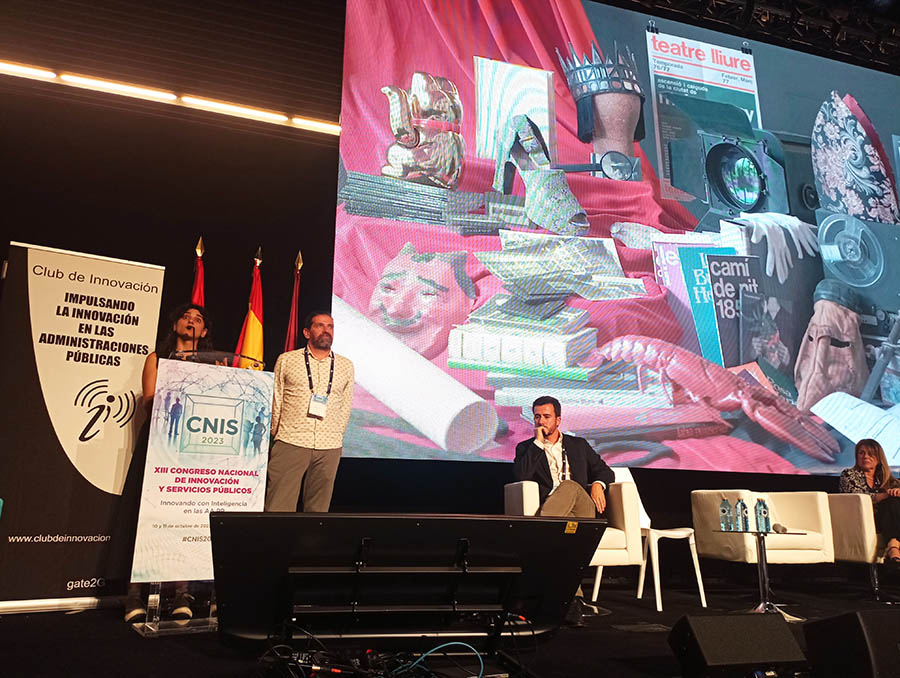
5 use cases for AI in the Public Sector

Carlos Rodríguez Abellán, Lead NLP Engineer at Fujitsu spoke about the exploitation of documents through artificial intelligence and natural language. He gave a brief tour of the history of AI and how language models have been perfected, until reaching the point where we are today, where NLP has multiple applications in public administration, the health sector, the legal sector, banking, etc. He then placed special emphasis on how to apply AI to the processing of medical data.
Pep Casals Puig, Director of Nubilum and Anabel de la Paz, Head of Archive, Library and Heritage at the Teatre Lliure in Barcelona gave the presentation “From the unfeasible to the possible”. They described the project carried out at Teatre Lliure, where hundreds of thousands of historical photographs of Teatre Lliure have been classified using artificial intelligence, and then provide a portal at arxiu.teatrelliure.com where you can consult all those images and other multimedia or other files. guys.
Fernando Escudero, ISID Marketing and Communication, presented an experience related to Law Enforcement, where he showed how artificial intelligence can not only be used to commit crimes, but also to solve them. In a fictional but reality-based case, he demonstrated how video and audio analysis can locate crime suspects in record time.
Luis Morró, CEO of Transkriptorium, spoke of a success story in the recognition of handwritten texts. After a brief introduction to the technology, Luis showed some examples of how the system is capable of recognizing handwritten texts in multiple languages and in ancient calligraphy that are no longer preserved, offering an extremely high success rate. The particularity of the system is that it does not discard the other interpretations of the same text that are generated, thus offering a wide range to paleographers.
Finally, Núria Espuny i Salvadó, General Director of Digital Administration at the Generalitat of Catalonia, closed the interventions, speaking about how AI is being used in the Generalitat, with four example cases: chatbots with generative AI, clinical validations of dermoscopic images to help diagnose skin cancer, as well as a system that detects and sanctions traffic violations, as well as another, which adapts legal documentation to a language understandable to citizens.
The round table was moderated and closed by Alejandro Delgado Gómez. Head of Document Management and Archives of the Provincial Council of Albacete, who offered some brief points of view on how AI impacts administrations.
We thank the organization and ODILO for giving us the opportunity to show our technology and see what other initiatives the field of artificial intelligence is offering in public administrations. We hope to repeat the experience next year.
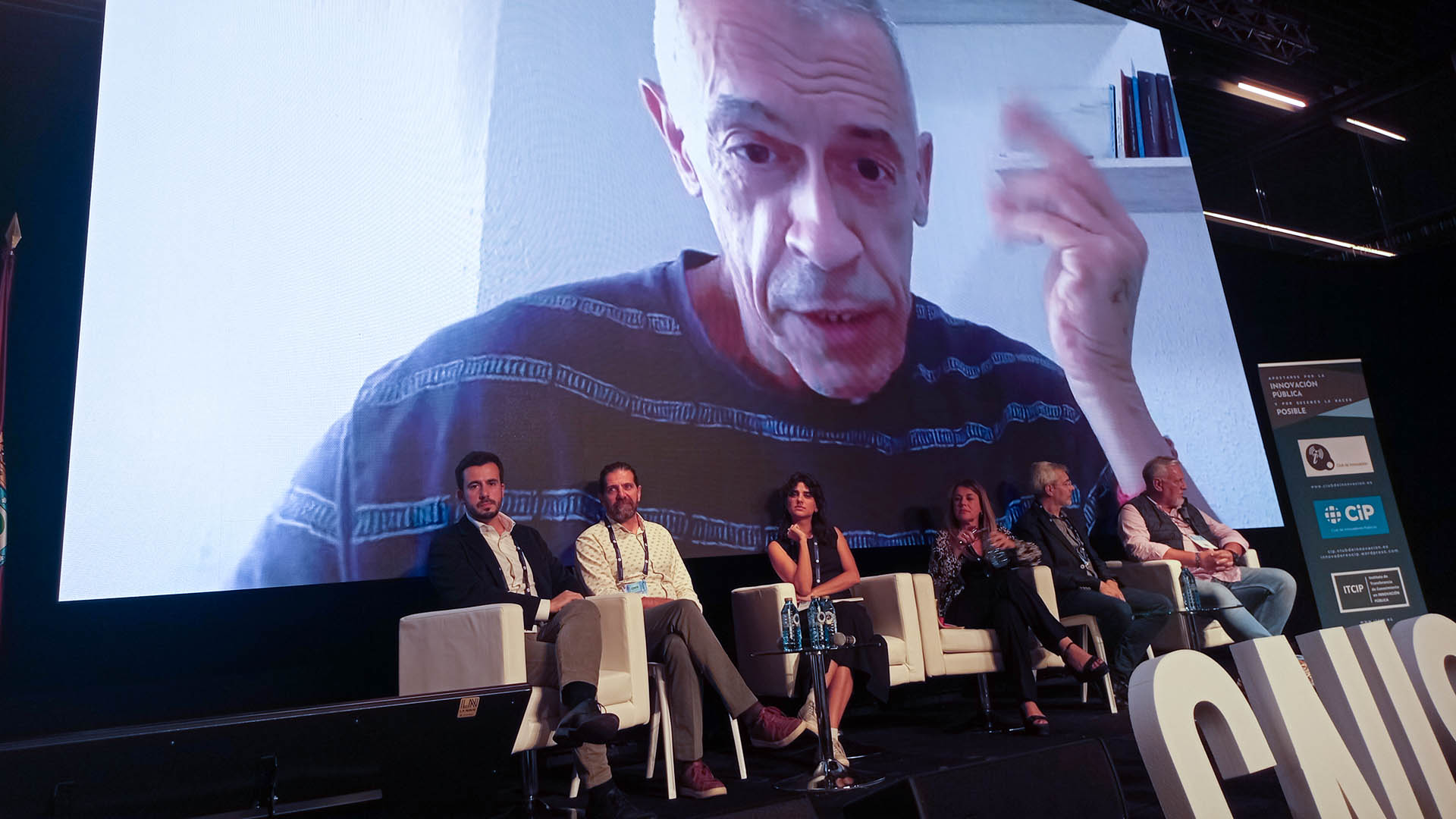
Videoma Archive: How AI contributes to the sports sector
We all surely know the advanced analysis systems for athletes’ movements that have been used for some time to optimize their performance. These systems, based on AI, try to obtain the maximum possible from each athlete. But that is not the only area where artificial intelligence can make contributions to the sports sector…
Beyond training
Obviously, for athletes, having a machine that suggests improvements in the way you train or move is a great advantage. However, today’s artificial intelligence finds application in many other areas, just as important. From Marketing, through journalism, to medical diagnoses, arbitrations and the best sports equipment, you name it.
And one of the areas that greatly benefits from the tremendous analytics capacity that AI offers, is video analysis of sporting events. In major championships, hundreds or thousands of hours of video are generated containing all types of sports, people, events, records or interesting moments. The problem is that watching all this material manually, in order to index it and comment on it, is simply impossible. For this reason, video analytics systems, such as Videoma Archive, can help manage this huge amount of data in a reasonable amount of time and, not only that, extract all the possible information, automatically.
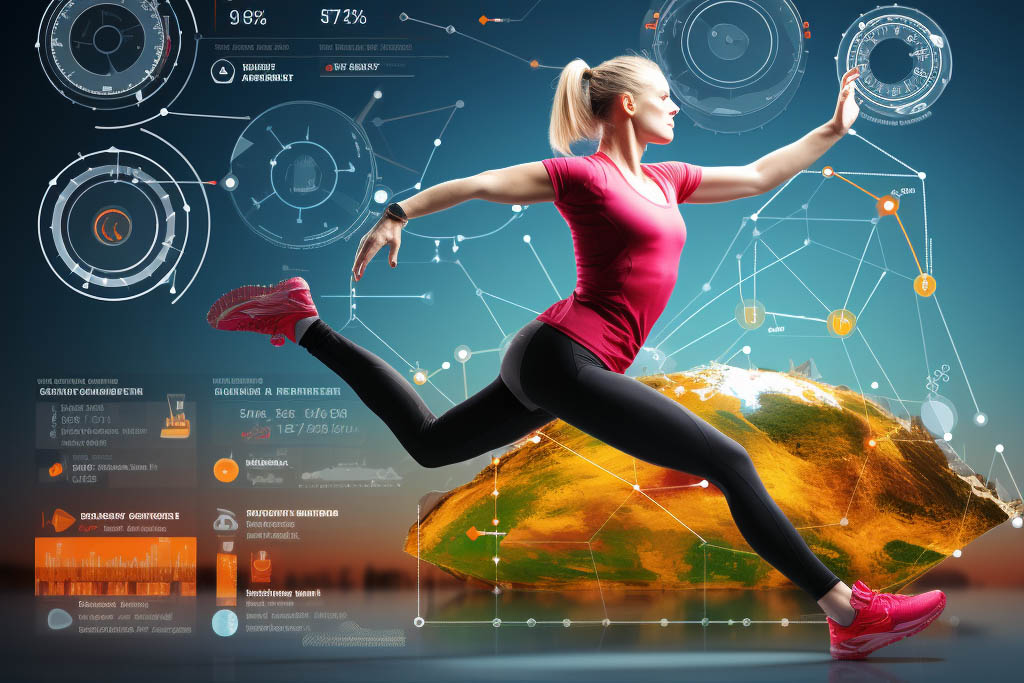
Use cases for video analytics in sports

There are a whole series of cases in which automated video analysis can provide interesting or necessary information to multiple processes, within various areas, in numerous sports. These are some of them, although there are many more:
- Find appearances of a certain athlete. Whether it is locating one’s own athlete or someone specific within a team, Videoma Archive’s facial biometric systems are capable of analyzing dozens or hundreds of hours of video using facial recognition, to find all the moments in which the athlete you search appears on the screen. This allows for all the clips to be gathered automatically, in order to review them, comment on styles or techniques, or simply to create a clipping book of all the interventions of said athlete over time.
- Locate certain sports. In mass broadcasts, such as international athletics championships or even the Olympic Games, there are dozens of television channels, and not all of them prioritize the same sports in the same way. Thanks to AI and some special analyzers, it is possible to select certain sports on all of those channels and mark the time points (or automatically extract clips) when they appear on the screen. This way it is not necessary to schedule recordings of multiple channels and, in addition, you will never miss anything, thanks to permanent monitoring.
- Locate statements. Speech-to-text (S2T) transcription systems allow you to locate certain phrases or words in a matter of seconds. With its help we have the possibility of locating and saving statements that have been made and that interest us, both our own and those of others. On the other hand, there is the possibility of finding specific terms such as “goal”, “out” or similar, to go directly to the points of interest of a specific match or competition.
- Locate certain sounds. Similarly, there are analyzers capable of finding certain sounds (a starting shot, audience shouts, etc.) within video recordings or broadcasts, so that we can gather all those events in a single report and view them when we need it.
- Visual learning. 65% of people learn better visually than auditory. This means that having an automatic selection of their interventions in multiple competitions makes it possible to better analyze what they have done well or badly, and helps to improve performance so as not to make the same mistakes again. In fact, this same thing can be applied to studying the competition, and watching their tactics or techniques.
Automatic reports
Videoma Archive not only allows us to analyze thousands of hours of video unattended in 24/7 to locate all the information we need, but also creates a searchable database, which will help us find more data and relate information to each other.
The platform has a web interface that allows easy access from almost any device, and generates automatic reports summarizing everything it has found, for an easier and more targeted analysis.

Conclusion
If you need to manage all the recordings of your athletes on one platform, have the ability to search for certain details in a matter of seconds, among thousands of hours of video, Videoma Archive is the platform that makes it easy for you. Its AI analysis capacity can be expanded to cover all your needs.
If you want to know more about Videoma Archive, you can visit us at booth CS302 at ISE 2024 (Integrated System Europe) to be held at Fira de Barcelona, from January 31 to February 2, 2024.
Beyond Storage: Understanding the Role of Metadata in Video Management Systems
In the ever-expanding landscape of digital content, managing vast libraries of videos can be a daunting task without the right tools. This article delves into the pivotal role of metadata within Video Management Systems (VMS), shedding light on how metadata enhances searchability, organization, and overall efficiency in handling video assets.
Decoding the Significance of Metadata in Video Management Systems:
Metadata refers to the descriptive information attached to each video asset within a Video Management System. This information acts as a crucial layer of intelligence, providing context, categorization, and relevant details about the video content. Understanding the role of metadata goes beyond mere storage; it’s about transforming a vast collection of videos into a valuable, searchable resource.

Key Aspects of Metadata in VMS:
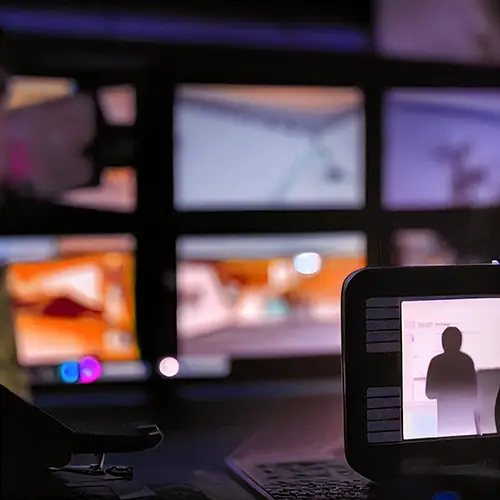
- Searchability: Metadata enables efficient and precise search functionalities. Users can easily locate specific videos by searching for keywords, tags, dates, or other criteria embedded in the metadata.
- Categorization and Organization: Metadata facilitates the systematic categorization of videos. This allows for the creation of structured libraries and playlists, making it easier for users to navigate and find related content.
- Contextual Information: Metadata provides contextual information about each video, including details such as the date of creation, contributors, associated projects, and any relevant notes. This context aids in understanding the content’s purpose and applicability.
- Rights Management: Metadata can include information about copyright, licensing, and usage rights. This is crucial for organizations that need to track and manage the permissions associated with each video asset.
Optimizing Video Management with Metadata:
- Customizable Metadata Fields: A robust Video Management System allows users to define and customize metadata fields based on their specific needs. This adaptability ensures that the metadata aligns with the unique requirements of the organization.
- Automated Metadata Tagging: Advanced VMS platforms leverage artificial intelligence and machine learning to automate metadata tagging. This streamlines the process of adding descriptive information to videos, saving time and ensuring consistency.
- Version Control: Metadata can also play a role in version control, helping users identify and track different versions of the same video. This is particularly useful in collaborative environments where multiple contributors may work on a single project.
- Enhanced Collaboration: Metadata fosters collaboration by providing a shared understanding of the content. Team members can easily access information about videos, reducing communication barriers and ensuring that everyone is on the same page.
Looking Ahead: The Future of Metadata in Video Management Systems:
As technology continues to evolve, the role of metadata within Video Management Systems is expected to expand. Future developments may include enhanced AI-driven metadata extraction, improved interoperability between different systems, and more sophisticated ways of utilizing metadata for content analysis.

Conclusion: Elevating Video Management through Intelligent Metadata Integration:
In conclusion, the incorporation of metadata within Video Management Systems is not just about adding labels; it’s about unlocking the full potential of video assets. Organizations that prioritize intelligent metadata integration gain a competitive edge in efficiently managing, searching, and utilizing their video content.
Investing in a Video Management System as VIDEOMA ARCHIVE that places emphasis on customizable metadata, automation, and collaboration ensures that your organization is not just storing videos but leveraging them as valuable resources. As the digital landscape continues to evolve, the role of metadata in video management will remain at the forefront of efficient content handling
ISID participates at an AI round table at CNIS 2023
On October 10th and 11th, the thirteenth Congreso Nacional de Innovación y Servicios Públicos (CNIS) will be held in La Nave, in Madrid. The CNIS is the main national meeting on electronic administration, bringing together representatives from all levels of Public Administrations, the leading companies in the sector and various experts related to the subject.
An annual innovation event for Public Administrations
The new edition of the Congreso Nacional de Innovación y Servicios Públicos (CNIS) will take place on October 10th and 11th, 2023 in La Nave (Madrid). It is the most important national conference on public innovation. In its thirteenth edition, the congress hopes to attract similar numbers of attendees to previous years: over a thousand.
The CNIS is the perfect place for the components of the Electronic Administration and public organizations, as well as private companies, related to the administration, to have the opportunity to network and learn about the technological innovations that the market offers. During the National Congress of Innovation and Public Services, debate sessions, presentations, workshops and round tables, as well as other parallel activities, are held.
On the other hand, on October 11 the #PremiosCNIS2023 will be awarded at a gala that will be held in the auditorium of the congress headquarters. This year more than 100 applications have been received in the 13 categories proposed by the organization.

AI, one of the main topics
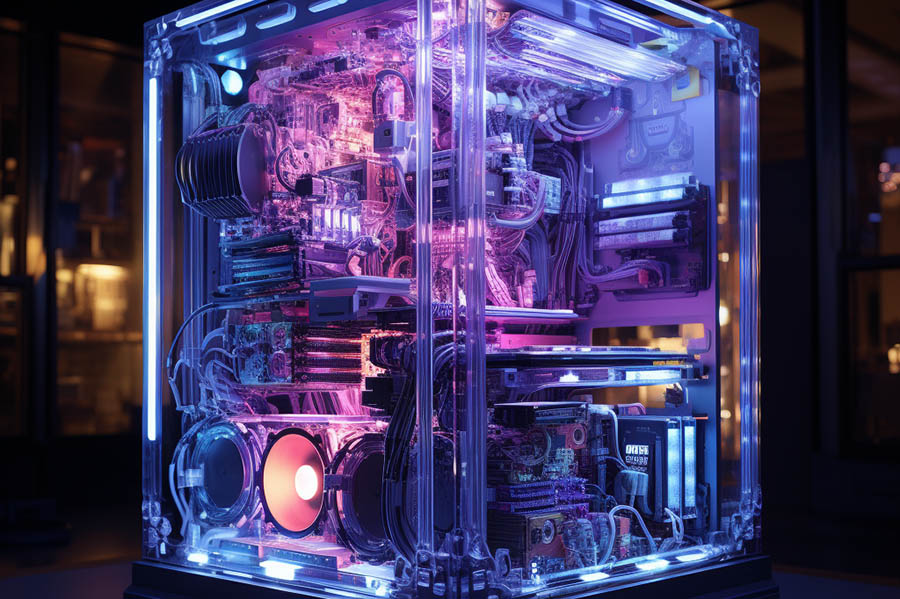
Artificial intelligence is now omnipresent in all work sectors, and has also reached Public Administrations. The possibilities it offers are enormous, but its use in computer systems that deal with personal data of citizens requires careful planning of its application in each case.
Within the framework of CNIS, a round table entitled “Un recorrido por la inteligencia artificial: 5 experiencias prácticas” will be held in which ISID will participate, a Spanish and global company that develops solutions and platforms for the processing, analysis, management and storage of audio and video media AI in multiple fields. At the round table, experiences will be shared between different companies in the sector and cases of real application of artificial intelligence technologies in various public administration bodies will be presented.
Container logistics security: An AI approach
Today, over 90% of all the non-bulk goods are transported by container ships. This is over 2 billion metric tons currently, or an equivalent of over 900 million 20 foot containers. But how can this incredible amount of containers go safely from one part of the world to another? Recently container logistics got a new helper: AI.
Today’s container logistics
When you open your fridge door, chances are that many of the things you see came in a container, from another part of the world. Even the fridge itself may have travelled from far away. Container ships are getting bigger and bigger as time goes by, and are currently at a staggering 24,000 containers in just one ship.
The whole logistics and supply chain of most products hinges on the standardized 20 foot or 40 foot containers. But tracking that amount of steel boxes going on and off ships, on and off trucks or on and off trains isn’t easy. Not from beginning to end of their journey, and not even inside one of the ports they may pass in their voyages. Fortunately, all container nowadays have what is called a unique “BIC number”, where BIC is the Bureau of International Containers.
This series of letters and numbers identify every container clearly, so it can be tracked from start to finish without problems. Or almost without problems. Because the sheer number of containers is a problem in itself. Tracking the contents of the currently biggest ship (24,000 containers) by hand is just impossible. That is why, for some years now, there are cameras on the cranes, entries and exists of the port and throughout the whole port area, to keep an eye on the BIC number, in order to always know where a certain container was last seen. And this system has been enhanced in recent years with artificial vision systems that can read the BIC number and log the container appearing in front of that particular camera, so it can be searched if necessary, to track it down.

The problem with containers in ports

One would think that, even in the apparent state of permanent chaos that a container port seems to be in, there is a method to keep everything on track and in its place. At the end of the day, you almost always get what you have ordered from somewhere in time. That surely means that containers hardly ever get lost.
But, unfortunately, they do. According to recent statistics, in 2022 661 containers fell off ships. Which isn’t bad, if we compare it to 2013, when almost 6,000 containers were lost at sea. However, what we really want to know is how many containers are lost in port. Although there are no reliable figures regarding this, talking to port authorities reveals that “missing” containers aren’t that rare an event. In the end they usually turn up again due to some misplacement, but locating a “lost” container costs time and money. And this is why technology is used more and more to avoid these incidents.
Cameras and AI help tracking down containers
We already mentioned the extensive camera network that every port has nowadays, to control the operation developing on port ground. We already talked about the BIC code. If you put both together and add some artificial intelligence to the mix, you get a real-time container monitoring platform that can tell you at all times where a certain container exactly is.
One of these platforms is our own Videoma, that we are expanding to include logistics tracking functionalities, using the same AI analyzers we already successfully use in Law Enforcement and other security related tasks.
The process begins when it is unloaded from a ship. The crane has a camera that records the BIC number and passes it to the system, which is connected to the port VMS (Video Management System) that receives all of the camera feeds, and reads the BIC number with a specialized OCR/ALPR module (adapted to the BIC format). At the same time, the system registers the camera that provides that information, as well as the current timestamp.
If the container goes to temporal storage in the port, the straddle carrier usually has a camera also, to record the movement. If the container goes by truck, the system records the license plate of the truck during loading and unloading, together with the BIC, to keep both numbers associated.
This allows an extensive control at any point in time, using infrastructure that is already in place at the port, but enhancing it with an automated tracking system that takes care of everything.
Should a container go missing, it is easy to find the last images of it in the system, together with the last camera that identified the BIC. As both entrance and exit of the port also have cameras, it’s easy to figure out if the container is still on port grounds or has been taken away. The platform can be used from mobile, which is very convenient when on-site.
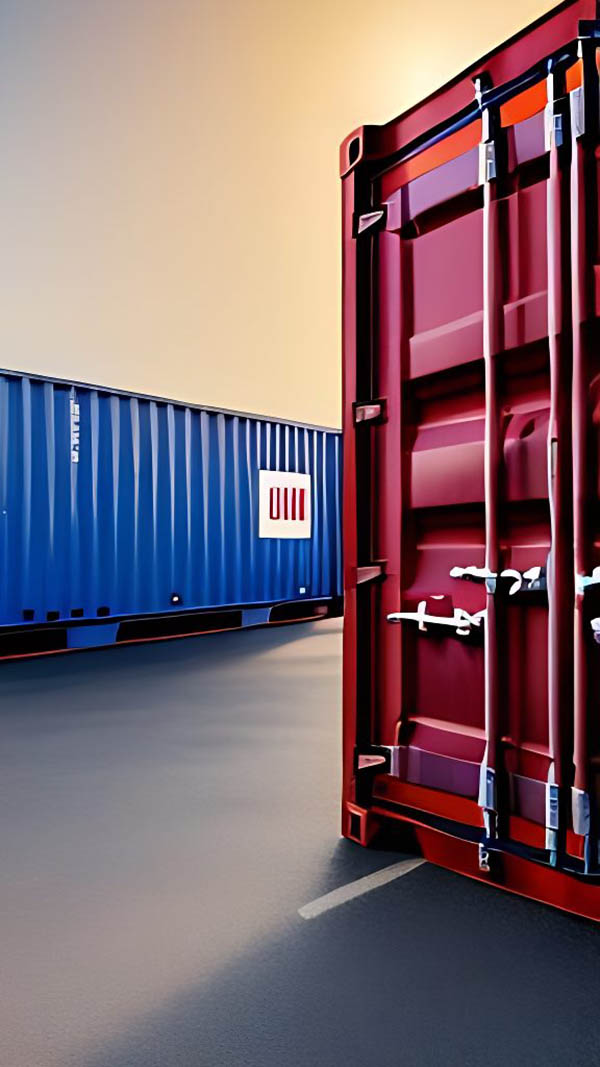
Conclusion
To ease management and tracking of shipping containers while they are at the port, artificial intelligence driven tracking systems connected to the port cameras are used nowadays to keep an extensive control of the location of each and every container inside the port area, as well as all the ones that arrive or leave either by ship, truck or train.
